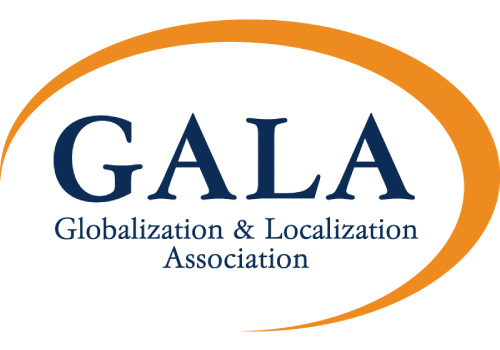What is the status of media content accessibility in 2019?
For content owners and distributors operating in the US market, content accessibility is a key criterion. A set of rules and regulations have been defined to ensure that broadcast media content is accessible to the deaf and hard of hearing. Here’s what you need to know about closed captioning regulations in 2019.
Closed captioning on TV
Captioning is mandatory for almost the entirety of programs in English and Spanish that air on US television. As the Federal Communications Commission (FCC) states in regard to closed captioning on Television: “Congress requires video programming distributors (VPDs) – cable operators, broadcasters, satellite distributors and other multi-channel video programming distributors – to close caption their TV programs.”
Moreover, emergency information also must be closed captioned, according to the 21st Century Communications and Video Accessibility Act (CVAA), to ensure that it is accessible by the deaf and hard of hearing. If part of the emergency information is being communicated with on screen text, it must not block any closed captioning and vice versa.
Exemptions
There are two cases in which the closed captioning requirement can be waived. The first is the ‘economically burdensome exemption’ and the second is the ‘self-implementing exemption.’
Economically burdensome exemption
If compliance with the closed captioning requirements is economically burdensome, a petition for exemption can be filed with the FCC supported by all relevant information showcasing that the provision of captioning would result in a significant difficulty or expense. The petition is then reviewed by the FCC who will consider the following factors to reach its decision:
- the nature and cost of closed captions,
- the impact on the provider’s operation,
- the provider’s financial resources and operations.
Self-implementing exemption
Providers don’t need to seek the Commission’s approval for closed captioning exemption, when they meet one of the following FCC criteria:
- Public service announcements that are shorter than 10 minutes and have not been paid by the federal government
- Programs shown from 2a.m. to 6a.m.
- Programs that are primarily textual.
- Non-news programming that is produced locally and has no repeat value.
- EBS (Educational Broadband Service) programming.
- Programming on new networks for the first 4 years after it begins operation.
- Primarily non-vocal musical programming.
- Captioning expenses exceed 2% of gross revenues received during the previous calendar year.
- Channels with revenues under $3million.
- Locally produced educational programs.
- Programming in a language other than English or Spanish, unless it can be captioned using the “electronic newsroom” technique.
- Video programming or video programming provider for which the captioning requirement has been waived due to an economically burdensome exemption.
- Programming subject to contractual captioning restrictions.
Closed captioning of media content distributed online
The 21st Century Communications and Video Accessibility Act (CVAA)requires that content which has aired with closed captions on television in the US, shall also be closed captioned when distributed online. Specifically, the closed captioning obligation is applicable to:
- Full-length video programming: programming that was shown on TV and is distributed through the internet in its entirety. The obligation is applicable for live, near live -recording that took place less than 24 hours prior to first-time broadcast, as well as, pre-recorded programming.
- Video clips: excerpts of full-length programming that are posted online. They can contain a single excerpt of a captioned TV program or they can be “montages.” For clips of live programming, there is a 12-hour window to post a captioned clip after the program has been shown on TV, while for clips of near live programming there is an 8-hour window. The closed captioning rule applies to the websites and the applications of the video programming distributors, not third-party websites and apps.
- Video programming that is already available online must be captioned only if it airs on television with captions. Captioning is to take place within 15 days from broadcast.
- Consumer-generated content and movies that are available online don’t need to be captioned, unless they have been previously shown on television with captions.
Who must provide captioning for online video content?
Video programing owners are obliged to provide program files with captions of at least the same quality as those used for the same program on television.
Programming distributors and providers must enable captions to reach the end user, maintaining the caption quality provided by the video programming owner.
What makes quality captions?
According to the FCC quality standards, captions should be:
- Accurate. They must be a transcript of the speakers’ exact words and convey background noises and other sounds to the fullest extent possible.
- Synchronous. They should be properly timed to words and sounds and they must be displayed on screen at a speed that can be read by viewers.
- Complete. They must run through the entire program.
- Properly placed. They should not block other important visual content or overlap one another.
However, the Commission doesn’t always expect full compliance to its quality standards, acknowledging the particularities of certain program types. More specifically, for prerecorded programs, the Commission has stated that full compliance is expected because there is time to review and edit the captions offline. For live and near live programming, on the other hand, the Commission has specified that it will take into consideration the difficulties to determine compliance.
The Americans with Disabilities Act (ADA)
Another regulation that you should keep in mind when it comes to closed captioning obligations is the Americans with Disabilities Act (ADA), which ensures that there is no discrimination against individuals with disabilities in “places of public accommodation.” Although it doesn’t refer specifically to media content accessibility, which is regulated by the CVAA, it was the legal basis for the lawsuit that the National Association of the Deaf (NAD) filed against Netflix in 2010.
NAD alleged that Netflix did not offer closed captions for much of its content and was therefore in violation of ADA. Although Netflix argued that as a streaming service it was subject to the CVAA, the court ruled that Netflix was a place of “public accommodation” and therefore subject to ADA Title III, a decision that resulted in a settlement and the closed captioning of the entire Netflix content library.
This was the first time that the ADA, which was passed in 1990 and originally referred to physical places, had been interpreted to apply to an online business.
*The above article refers to the state of closed captioning in 2019 and the current requirements. For more information, please see links below.
**This is an informative article and doesn’t substitute legal advice.
References:
Television and Closed Captioning
Closed captioning video programming delivered using internet protocol IP
The Americans with Disabilities Act (ADA)
FCC Online TV Content Captioning is looming – How prepared are you?







